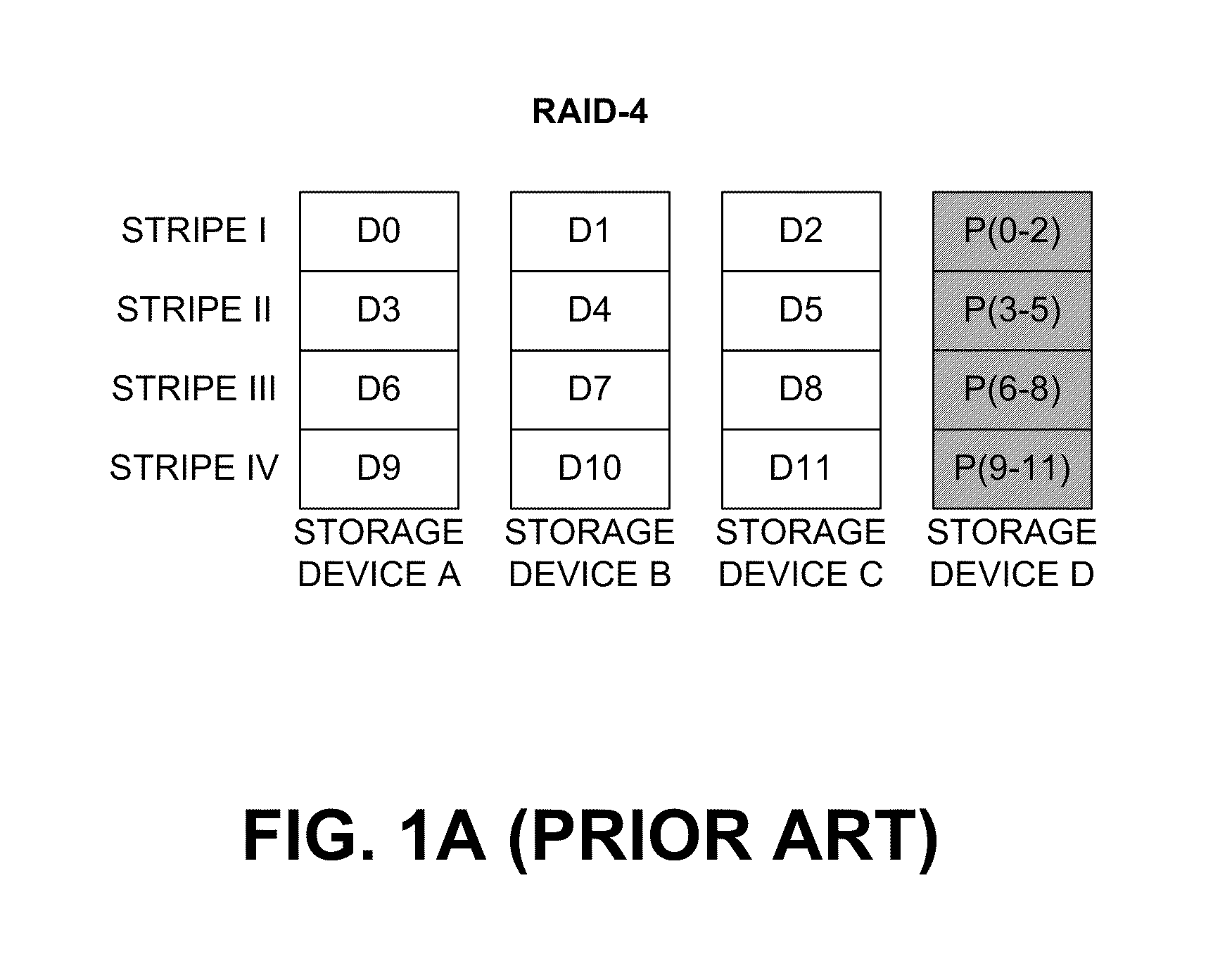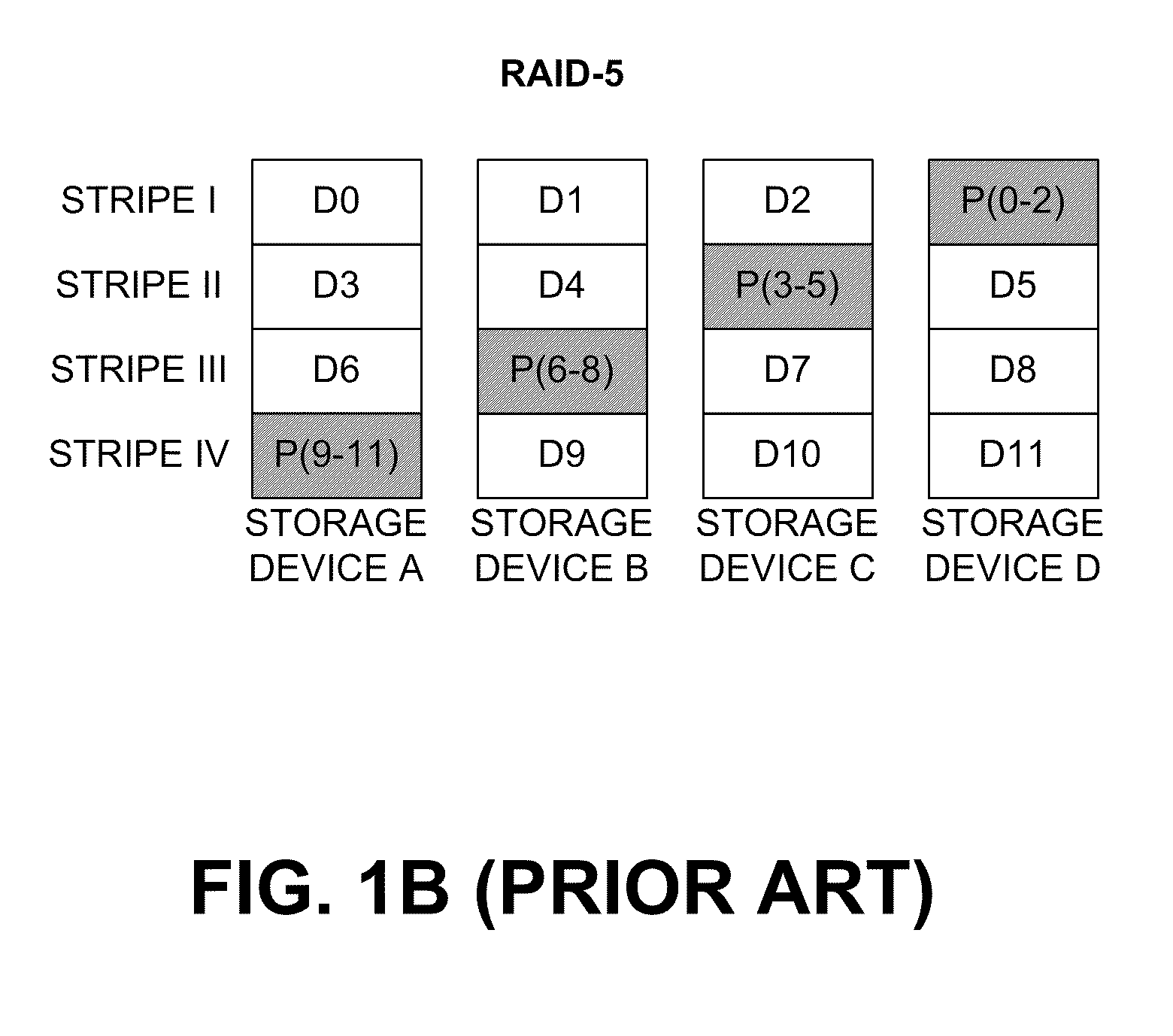Mechanism for correcting errors beyond the fault tolerant level of a raid array in a storage system
a storage system and fault tolerance technology, applied in error detection/correction, redundancy hardware error correction, instruments, etc., can solve the problems of raid-1 protection scheme being typically very expensive to employ, data can be lost or corrupted, etc., to increase the resiliency and availability of the storage system. , the effect of reducing the number of errors
- Summary
- Abstract
- Description
- Claims
- Application Information
AI Technical Summary
Benefits of technology
Problems solved by technology
Method used
Image
Examples
Embodiment Construction
RAID Protection Levels
[0025]Referring now to FIGS. 1A and 1B, arrangements of data blocks on storage devices using parity blocks are illustrated. In FIGS. 1A and 1B, data sent to a storage system (shown in FIG. 2) from a client(s) for storage as part of a write operation may first be divided up into fixed-size, e.g., four Kilo Byte, blocks (e.g. D0, D1, etc.), which are then formed into groups that are stored as physical data blocks in a “stripe” (e.g. Stripe I, Stripe II, etc.) spread across multiple devices (e.g., disks) in an array. Row parity, e.g. an exclusive-OR (XOR) of the data in the stripe, is computed and may be stored in a parity protection block on storage device D. The row parity, e.g., P(0-2), may be used to reconstruct a single lost or corrupted data block in Stripe I. The location of the row parity depends on the type of protection scheme or protocol implemented. FIG. 1A shows a RAID-4 scheme in which the row parity, e.g. P(0-2), P(3-5), P(6-8), and P(9-11) are stor...
PUM
 Login to View More
Login to View More Abstract
Description
Claims
Application Information
 Login to View More
Login to View More - R&D
- Intellectual Property
- Life Sciences
- Materials
- Tech Scout
- Unparalleled Data Quality
- Higher Quality Content
- 60% Fewer Hallucinations
Browse by: Latest US Patents, China's latest patents, Technical Efficacy Thesaurus, Application Domain, Technology Topic, Popular Technical Reports.
© 2025 PatSnap. All rights reserved.Legal|Privacy policy|Modern Slavery Act Transparency Statement|Sitemap|About US| Contact US: help@patsnap.com



